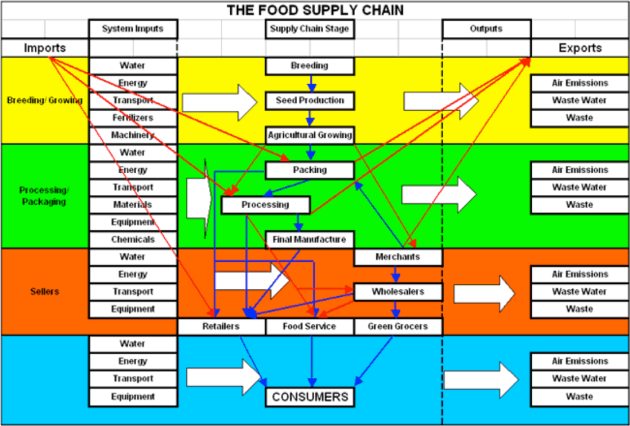A recent U.S. federal government recall of tainted beef illustrates the complexity and pressing risks of the global food supply chain. Managing these risks is critical to agribusiness, the well-being of billions of people and the global economy.
To those who make a living from the fields, the global food supply chain appears about as risky and controllable as the weather.
Farm and agribusiness operators know well the risks posed by the complexity of the modern agricultural supply chain system. They have become more aware that they can face quick and devastating economic loss should some part of the chain break. If a major buyer goes down, or some critical link in their supply chain – over which they have no influence – fails, at home or abroad, agribusiness operators can see their annual production and income collapse.
Being from California, the vagaries of weather and the desperate shortage of local water were at the forefront of their minds. But the next generation of producers are painfully aware of their vulnerability to supply chain disruptions. They have seen colleagues go out of business, and are at a loss as to how manage a worst-case scenario.
For some California producers, just such a scenario developed last month when the Rancho Feeding Corporation, a California livestock slaughterhouse, recalled 8.7 million pounds (3.9 million kg) of beef. The U.S. Department of Agriculture Food Safety and Inspection Service declared the meat “unsound, unwholesome or otherwise … unfit for human food” and ordered it “be removed from commerce.” The recall covers the facility’s entire production of 2013.
This action has wide-reaching implications, and not simply for consumers and American cattlemen. The decision affected U.S. retail outlets in as many as 36 U.S. states, including Safeway, 7-11, Kroger, and Walgreens. Global corporations such as Wal-Mart and Nestlé were also forced to ditch product. Altogether, at least 6,300 retails stores are involved along with 1,600 food distributors. The USDA helpfully published a 211-page list.
So much for the wholesale side of the problem. There is a production-side dimension, as well.
Farm production at risk
Ranchers and others who contracted with Rancho as a custom-kill facility have found their private inventories snagged in the USDA net. Their animals were never commingled with the diseased animals at the center of what is now a criminal investigation. Their meat products were not distributed by Rancho but were returned to the farm operators, who froze them to hold in inventory to help better manage supply.
Among the livestock sold to meat processors like Rancho in California are dairy cows. When older and no longer valuable for milk, cows are slaughtered and processed into hamburger and cheaper cuts of meat.
California dairies have been hard hit by the Great Recession, milk price wars, and the California drought. Many dairymen have been forced to unload their herds into the food chain. Rancho was a buyer of retired dairy cows, which some in California agribusiness suspect may have been a source of the contaminated meat.
Better risk management needed
Managing the risks of this ferociously complex system is essential to the world’s well-being and peaceful economic development. The concern is that supply chain risk management capabilities are sometimes not up to the challenging task.
A simple representation of the complexity of the global food supply chain can be found below, in a chart from Duke University. Disruption of supply in one link of the chain can cause production and distribution dysfunction at other links up and down the chain. Disruptions can ripple throughout the system, and can have a deleterious impact for indefinite periods of time.
The production side, the Rancho recall shows the combined effects on supply chain management of government regulation, weather and natural disasters, changing agricultural practices, evolving business models for food production, processing, and distribution, efforts to separate differentiated high-end agricultural production from commodity production and pricing, and the lingering effects of recent financial and economic calamities.
Unintended consequences at work
Also of interest is the role of technological advances, including innovations such as digital health record keeping and RFID tracking of animals. Both work to ensure healthy food products are not excluded from the system, and increased adoption of environmentally friendly production agriculture and humane and sustainable animal husbandry.
These practices are commonly believed to offer solutions to significant problems in world agricultural production. They hold potential for important future progress but can also contribute to the already weighty risk burden borne by the agricultural producers, processors, distributors, and consumers that make up the food supply chain. As with all risk, there are increased costs. The law of unintended consequences applies here, as well.
Fortunately, the circumstances of the current beef recall have not had international implications, like the trade restrictions imposed by Japan against U.S. beef between 2003 and 2013. But serious downside potential exists in global economic affairs for widespread impact of future production and supply chain disasters.











